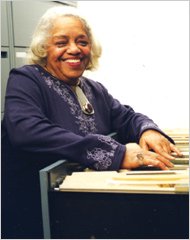
Good Morning POU!
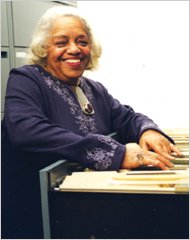
Cuesta Benberry (September 8, 1923 – August 23, 2007) was an American historian and scholar. Considered to be one of the pioneers of research on quiltmaking in America, and was the pioneer of research on African-American quiltmaking. Her involvement in quilt research spans from founding and participating in various quilt groups, to writing articles in renowned quilt magazines and journals. As a quilt scholar, Benberry acquired a collection of important quilts dating from the late 19th century up to the 21st century, as well as an extensive collection of paper documents supplementing quilting exhibitions, books, articles and her personal research.
Cuesta Ray Benberry was born in Cincinnati, Ohio and raised in St. Louis, Missouri. Benberry obtained a bachelor’s degree in education from Stowe Teachers College (now Harris-Stowe State University). She later earned her MLS in library science from the University of Missouri at St. Louis. She worked in the St. Louis public schools for 40 years and retired from her job in 1985. She married George L. Benberry in 1951.
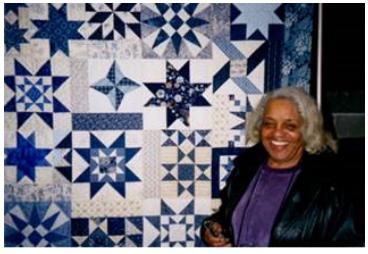
A visit to Kentucky to see her husband’s family exposed Cuesta to quilts. She did not necessarily want to make the quilts, but was inclined to study the quilts. Mrs. Benberry looked at the individual in quiltmaking and African-American quiltmaking. She made extensive leaps in quilt research, especially in African-American quiltmaking.
In the early 1970s Benberry started to write for a small magazine based in Sapulpa, Oklahoma, Nimble Needle Treasures, which was unusual in that it published articles as well as patterns. When it was wound up in 1975 she began to write instead for Quilter’s Newsletter, then the only magazine of its kind.
Benberry’s interest in quilting began with her husband’s family, who introduced her into the world of quilting as part of their family traditions. She was fascinated by the significance that quilts held in people’s lives, “They’re on the bed. They’re there at birth. They’re there at death. They’re part of the marriage bed. They’re part of our lives, and they give us so many memories… You’d call a quilt as you would a child. [Her mother-in-law would] lift up a trunk lid and say, ‘Come see my Sugar Bowl’; she didn’t say, ‘Come see my blue and white quilt.’ Then I wanted to learn more about their history.” It was the emotional connection that quilts held in her husband’s family that intrigued Benberry to explore the historical significance of quiltmaking in America.
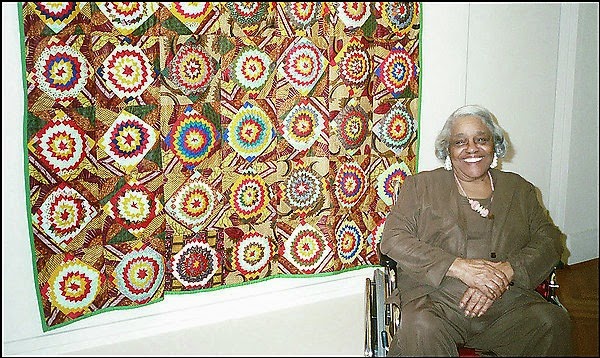
The information acquired through Benberry’s research included information about African-American quiltmaking, to which she eventually narrowed her research focus. There was little previous research done on African-American quiltmaking so in addition to sorting through her own research and exhausting library resources, Benberry began to interview African-American quilt-makers and gathered information about slave-made quilts, as well as their personal take on the role of African-American quilt-makers in the realm of American quilt history. Benberry ventured away from previous theories on African-American quilt making that suggested visual criteria was the main determinant in qualifying a quilt as African-American. She countered the theories on African-American quilts being determined by one visual style (improvisational) by noting in her comprehensive research the differences in technique throughout several African-American quilts.
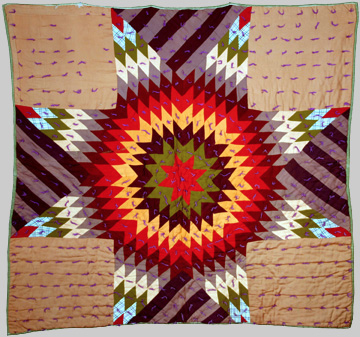
Benberry attributes the increased interest in African-American quiltmaking to three specific events:
- Inclusion of Harriet Powers’ Bible Quilt in Selections of Nineteenth Century Afro-American Art at the Metropolitan Museum of Art by Regina Perry
- “Harriet Powers: Portrait Quilter” essay published in Missing Pieces: Georgia Folk Art, 1770–1776 written by Gladys-Marie Fry
- The Mississippi quilt exhibition “More Than Just Something to Keep You Warm” by Roland Freeman.
Research methods
During her research, Benberry kept detailed notes, files, catalogues, correspondences and many other additional paper documents that are now being sorted and used as reference material for people interested in quilt research.
Benberry used the resources around her in St. Louis to begin her research. She started at the St. Louis Public Library, the Washington University Library, the library at St. Louis University, and the St. Louis Mercantile Library at the University of Missouri-St. Louis. She immediately discovered that St. Louis was the center for manufacturing stamped goods for needlework, leading her to look into the commercial side of quiltmaking.
In order to gain a quilter’s perspective into quiltmaking, Benberry joined various round robin groups (pattern exchanges). Because Cuesta herself was not a quilt-maker, the members of these networks would often send her completed blocks so she could see what they should look like. By joining round robin groups, Benberry developed friendships with active quilters and found a network of people also interested in studying quilt history.
Delores Hinson was one of the many friendships fostered by Benberry’s interaction with various quilting networks. Hinson encouraged Benberry to research further into the history and significance behind the quilt block designs, as well as advised her to publish her research and knowledge of quiltmaking and its history.
In 1986, Benberry went to England to work and study with the Zamani Soweto Council, a group of black South African women. These women were brought to England from South Africa to teach them quilting skills in hopes they would learn a profitable skill to become economically independent. Upon returning to the United States, Benberry began a lecture circuit featuring the Zamani Soweto Council, bringing attention to the apartheid struggle.
Benberry is probably best known for her writing about the diverse contributions to quilting by African-Americans. Her books and articles include:
- Always There: The African-American Presence in American Quilts (1992)
- Piece of My Soul: Quilts by Black Arkansans (2000)
- 20th Century Quilts 1900-1970: Women Make Their Mark (1997)
- A Patchwork of Pieces: An Anthology of Early Quilt Stories, 1845–1940 (1993)
- “Afro-American Women and Quilts: An Introductory Essay”, a landmark article published in Uncoverings, 1980, ed. Sally Garoutte.
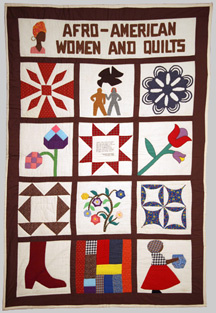
Benberry also wrote the foreword to quilt history books such as Hidden in Plain View: A Secret Story of Quilts and the Underground Railroad (1999) by Jacqueline Tobin and Raymond Dobard, A Communion of the Spirit: African-American Quilters, Preservers, and Their Stories (1996) by Roland Freeman, Black Threads: An African American Quilting Sourcebook (2002) by Kyra E. Hicks, and Journey of the Spirit: the Art of Gwendolyn A. Magee (2004), edited by René Paul Barilleaux.
Benberry was inducted into the Quilters Hall of Fame in 1983. She was a founding member of the American Quilt Study Group and the Women of Color Quilter’s Network.
Cuesta Benberry died on August 23, 2007 at the age of 83. She was survived by her husband, her son, two grandchildren and two great-grandchildren.
